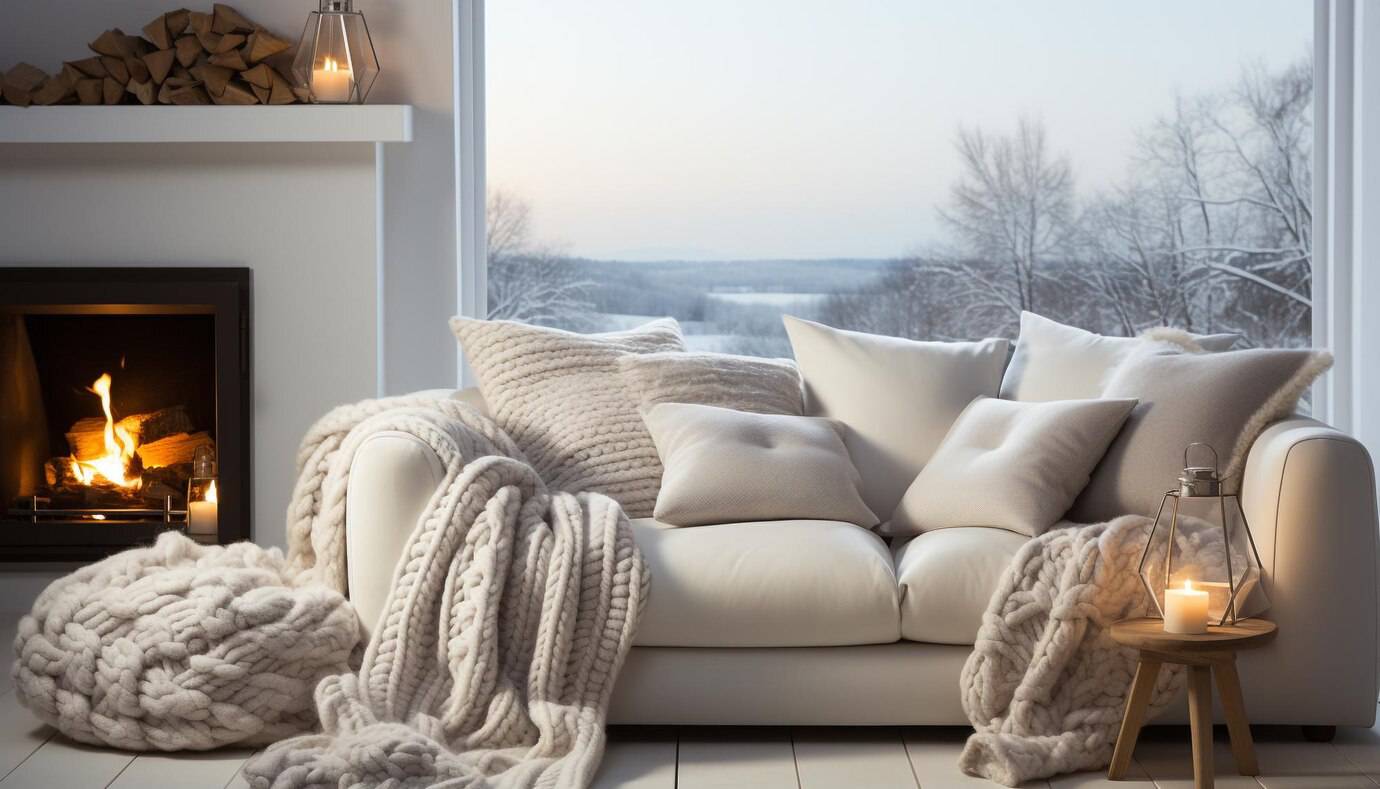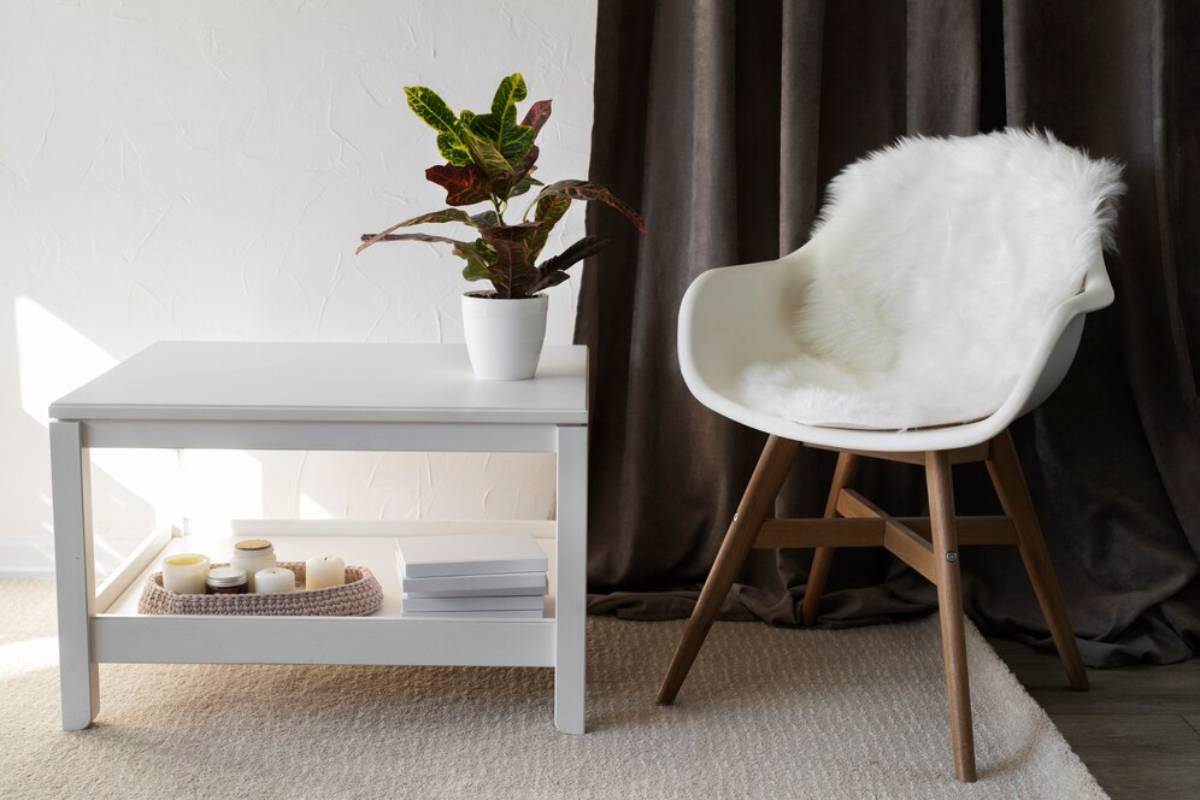
How to Layer Textures for a Cosy Scandinavian Look
Texture is the quiet hero of Scandinavian design. While the palette stays neutral and the furniture remains minimal, layered textures infuse spaces with warmth, comfort, and personality.
Our team found that in Nordic interiors, texture plays a vital role in transforming clean, pared-back rooms into inviting sanctuaries. By mixing materials thoughtfully—wool, wood, linen, leather—you create a home that feels as good as it looks. The result? A space that is effortlessly cosy, quietly tactile, and deeply livable.
This guide will walk you through how to layer textures like a true Scandinavian. Whether you’re furnishing a new home or elevating an existing room, these strategies will help you add depth, warmth, and visual balance—without adding clutter.
Pro Tip: When working with a limited colour palette, texture becomes your most powerful tool for creating interest.
Quick Guide: Texture Layering for Cosy Nordic Interiors
- Start with a neutral, matte foundation.
- Layer soft textiles across furniture and flooring.
- Contrast smooth and rough surfaces for depth.
- Mix natural materials like wood, leather, and linen.
- Add organic accents such as sheepskin or ceramic.
- Balance hard finishes with plush elements.
- Use restrained repetition for harmony.
Important: Scandi interiors rely on contrast—not colour—to create emotion. Texture is where that emotion lives.
The Role of Texture in Scandinavian Design
In Nordic climates, homes are designed to be warm, comforting retreats from the outside world. But since Scandinavian design avoids excess, cosiness is achieved not through layers of colour or pattern—but through layers of feel.
Texture does the work of:
- Visual depth in monochrome colour schemes
- Softness and tactility in minimal furniture layouts
- Natural variation in rooms with clean lines and symmetry
- Seasonal flexibility, as textures can be swapped with the weather
Texture isn’t decoration—it’s a design language of its own.
Step 1: Build a Soft, Neutral Foundation
Texture layering begins with the canvas. Scandinavian design typically uses a neutral backdrop—white or soft grey walls, pale wood flooring, and minimal window treatments.
Best Base Textures:
- Matte paint or limewash walls
- Natural wood flooring in oak, birch, or ash
- Woven jute or wool area rugs
- Linen or cotton curtains in off-white or sand
These create an atmosphere that’s airy, calming, and ready to receive warmer layers.
Step 2: Layer With Textiles for Comfort
Textiles are the fastest way to introduce tactile variety. Think plush meets rugged, coarse meets smooth—all within the same visual tone.
Must-Have Textiles:
- Wool throws draped over sofas or chairs
- Chunky knit blankets for added softness
- Linen bedding—lightweight and crinkled for visual softness
- Faux fur or sheepskin rugs for warmth and contrast
- Velvet cushions in muted tones for depth
Use multiple layers on beds and sofas, but keep colours muted and consistent.
Aesthetic Tip: Stick to a unified palette—ivory, stone, warm grey—and let weave and sheen do the work of variation.
Step 3: Mix Hard and Soft Materials
Scandi interiors excel at juxtaposing smooth against rough, warm against cool. This creates a dynamic balance without visual chaos.
Hard + Soft Pairings to Try:

- Leather chair with a linen cushion
- Ceramic lamp base on a wool-covered sideboard
- Stone countertop softened by textile stools or placemats
- Wooden bench layered with sheepskin throw
This push-and-pull of surface textures mimics nature—stone and moss, bark and snow—and brings soul to minimal spaces.
Step 4: Add Organic Accents and Handcrafted Pieces
Natural variation brings authenticity. Incorporate organic forms and hand-touched materials to soften symmetry and inject character.
Accent Textures to Include:
- Unglazed pottery with subtle imperfections
- Handwoven baskets for storage
- Rough-edge wooden bowls or trays
- Soft stoneware mugs in muted glazes
- Paper lampshades or lanterns for soft lighting
These touches feel imperfect, human, and tactile—hallmarks of warm Nordic design.
Function Tip: Use these as focal points in otherwise quiet rooms to draw the eye and invite interaction.
Step 5: Focus on Furniture With Visible Grain or Natural Fibres
In Scandinavian spaces, furniture is chosen as much for its feel as its shape. Materials should be honest, understated, and quietly expressive.
Ideal Furniture Textures:
- Oiled wood with visible grain
- Rattan or cane chairs with open weave
- Wool-blend upholstery in stone or pebble tones
- Matte metal legs for a modern edge
- Glass or stone table tops for contrast
Avoid high-gloss finishes and overly processed textures. The goal is authentic simplicity.
Step 6: Use Layering Vertically as Well as Horizontally
Most people layer textures across surfaces—but vertical layers make a room feel cocooned.
Vertical Texture Layering Ideas:
- Curtains that pool slightly on the floor
- Woven wall hangings or framed fabric panels
- Textured pendant lamps (e.g. rice paper or matte metal)
- Tapestries or fabric panels in reading corners or behind beds
- Tall plants with rich foliage to break vertical flatness
Design Tip: Vertical layers help soften tall ceilings or echo the cosy intimacy of a Scandinavian cabin.
Step 7: Keep It Balanced With Rhythm and Repetition
Texture adds visual rhythm. But too many competing materials can look chaotic—even in muted tones.
Best Practice:
- Repeat key textures in at least two different areas
- Keep to 3–4 dominant materials per room
- Use a consistent thread—e.g. wool on the sofa, rug, and cushion
- Add contrast with 1–2 statement materials (e.g. black iron, raw stone)
The result feels intentional, not improvised.
Scandinavian Texture Elements to Consider
| Texture | Common Uses |
| Wool | Throws, cushions, rugs, upholstery |
| Linen | Curtains, bedding, upholstery |
| Wood | Flooring, furniture, decor accents |
| Stone/Ceramic | Lighting, countertops, decorative objects |
| Sheepskin/Faux Fur | Rugs, chair covers, foot of bed |
| Leather | Chairs, handles, occasional accents |
| Rattan/Cane | Chairs, baskets, headboards |
Warning: Avoid too many synthetic “textured” fabrics. They can look and feel artificial, disrupting the tactile harmony of a Scandinavian interior. Always prioritise feel alongside visual appeal.
Frequently Asked Questions

1. Can I layer textures in a small space?
Yes—texture is especially effective in small rooms where you can’t rely on colour or space to create interest. Stick to a tight palette and mix materials within that range.
2. How do I avoid making the space look messy?
Use layered order, not chaos. Group throws neatly, use cushion sets, and avoid piles of textiles. Keep high-traffic areas clear and let each texture have room to breathe.
3. Do I need to match all my textures across rooms?
Not exactly—but keep a cohesive thread. If one room is wool-heavy, use wool or a similar textile in the next. This creates flow without duplication.
4. Are shiny materials okay in cosy minimalism?
Use them sparingly. Shiny metals, glass, or glazes can add contrast, but too many will disrupt the softness. Aim for low-sheen, tactile finishes.
5. What’s the best way to update a room using texture alone?
Add a rug, throw, and layered curtains. These alone can dramatically change the mood of a space without altering structure or layout.
Let Texture Do the Talking
In Scandinavian design, texture is more than a finishing touch—it’s the heart of the space. When you layer natural materials with intention, restraint, and rhythm, you build rooms that feel quiet, cosy, and deeply personal.
It’s not about more—it’s about better. The right mix of rough and soft, warm and cool, dense and airy turns your home into a place of balance, comfort, and peace.
So run your hand across a wool throw. Sink your toes into a linen-covered cushion. And let texture bring your Nordic-inspired space to life.


